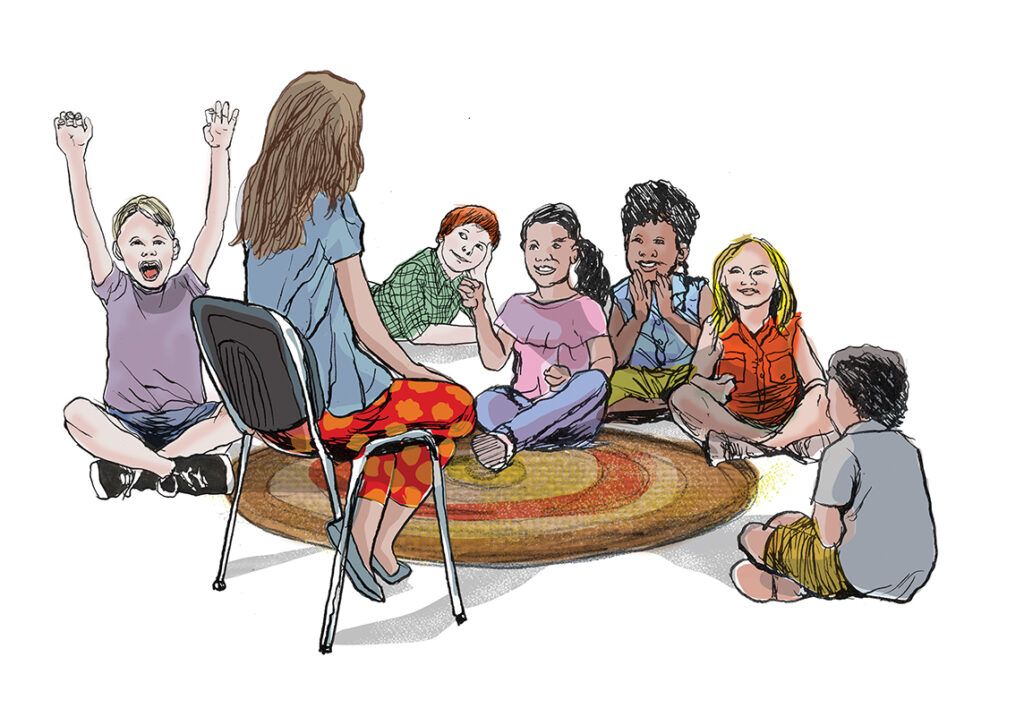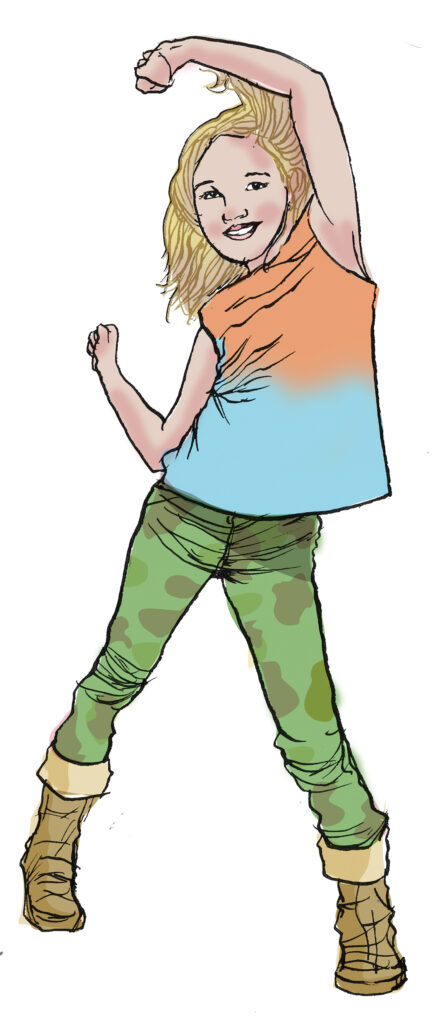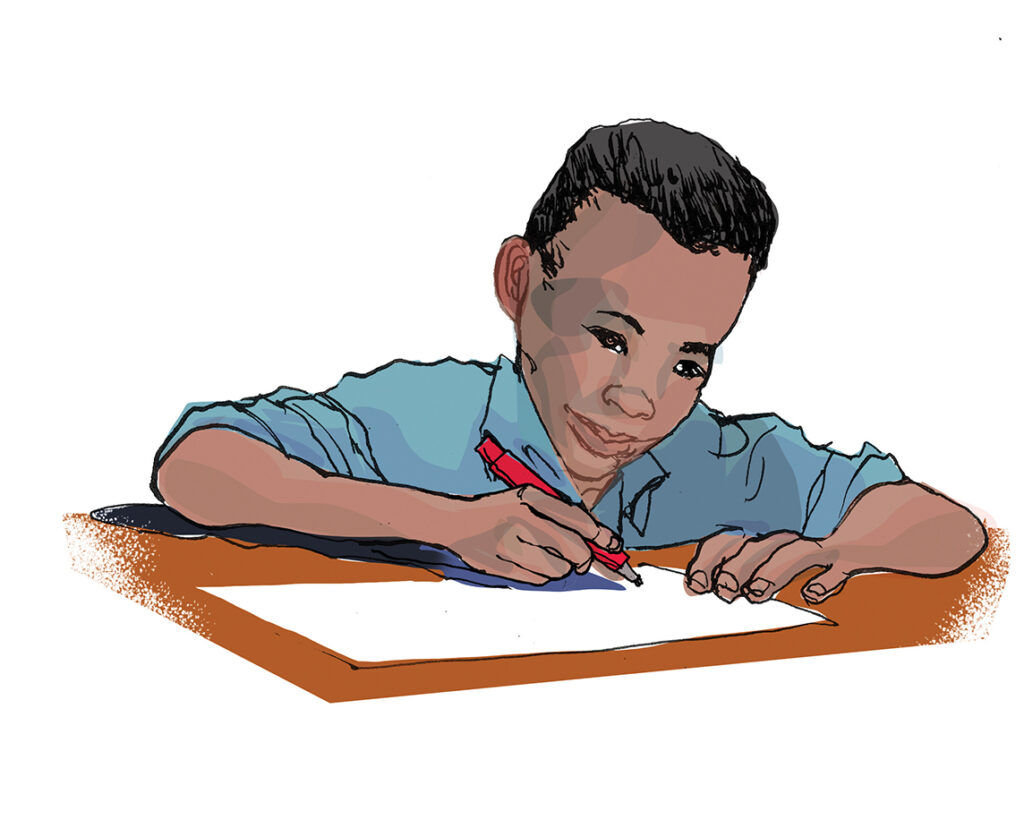Creating Classrooms for Equity and Social Justice
Illustrator: Keith Henry Brown

On Jan. 29, the White House released an executive order (EO), “Ending Radical Indoctrination in K–12 Schooling.” The EO is a rambling and lawless document that fundamentally misstates the role of public education and falsely presumes the president can control what schools and teachers do in their classrooms. He cannot.
Federal law is unambiguous. The General Education Provisions Act, originally enacted in 1967, states: “No provision of any applicable program shall be construed to authorize any department, agency, officer, or employee of the United States to exercise any direction, supervision, or control over the curriculum, program of instruction, administration, or personnel of any educational institution, school, or school system, or over the selection of library resources, textbooks, or other printed or published instructional materials by any educational institution or school system.”
Trump’s EO threatens — and challenges — teachers. The threat is the order’s command to agency heads and cabinet members to identify within 90 days streams of federal funding to cut or manipulate to promote Trump’s plan to turn schools into sites of MAGA indoctrination and McCarthy-era witch hunts. The challenge: for teachers to continue to serve our students and communities by bravely and audaciously teaching the truth and making sure our curriculum is as broad and inclusive as the struggle for social justice requires.
Trump has outlined a nightmarish vision of education based on censorship, indoctrination, and lies. At Rethinking Schools we have a different vision, outlined here, to support teachers in “Creating Classrooms for Equity and Social Justice.” First published in our 1994 book Rethinking Our Classrooms, we have revisited and revised it over the years. It is especially relevant in these perilous times. —editors
As educators, we begin from the premise that schools and classrooms should be laboratories for a more just society than the one we now live in. Unfortunately, too many schools are training grounds for boredom, alienation, and pessimism. Too many schools fail to confront — and at times even reproduce — the racial, class, gender, linguistic, and disability inequities woven into our social fabric. And they have not alerted young people to the enormity of the environmental crises we face. Teachers are often simultaneously perpetrators and victims, with little control over planning time, class size, or broader school policies — and much less over the poverty, hopelessness, and other “savage inequalities” that help shape our children’s lives.

But we should focus on what we can do, not on what we cannot do. Years ago, Brazilian educator Paulo Freire wrote that teachers should attempt to “live part of their dreams within their educational space.” Classrooms can be places of hope, where students and teachers gain glimpses of the kind of society we could live in and where students learn the academic and critical skills needed to make it a reality.
No matter the grade level or content area, we believe that several components comprise what we call a social justice classroom. What follows is not intended as a checklist or rubric, but as an interlocking set of aspirations to guide our planning, our engagement with young people, and our work with colleagues. Curriculum and classroom practice must be:
- Grounded in our students’ lives: All teaching should begin with respect for children, their innate curiosity, passions, and their capacity to learn, with curriculum rooted in children’s needs and experiences. Whether we’re teaching science, mathematics, language arts, or social studies, ultimately the class must be about our students’ lives as well as about a particular subject. Students should probe the ways their lives connect to the broader society, and are often limited by that society. And they should probe their lives for sources of joy, meaning, and connection, and how these can inform our vision of a better society.
- Critical: Curriculum should equip students to “talk back” to the world. Students must learn to pose essential critical questions: Who makes decisions and who is left out? Who benefits and who suffers? Why is a given practice fair or unfair? What are its origins? What alternatives can we imagine? What is required to create change? Through critiques of advertising, cartoons, literature, legislative decisions, military interventions, job structures, social media algorithms, newspapers, movies, agricultural practices, or school life, students should have opportunities to question social reality.
- Multicultural, anti-racist, pro-justice: In Rethinking Schools’ first book, Rethinking Columbus, we used the discovery myth to demonstrate how children’s literature and textbooks tend to value the lives of Great White Men over all others — how, too often, they celebrate racism and colonialism. Traditional materials invite children into Columbus’ thoughts and dreams; he gets to speak, claim land, and rename the homelands of Native Americans, who appear to have no rights. Implicit in many traditional accounts of history — and our world today — is the notion that children should disregard the lives of people of color, women, working people, immigrants, LGBTQ people, and people with disabilities; they’re led to view history and current events from the standpoint of the dominant groups. By contrast, a social justice curriculum strives to include the lives of all those in our society, especially the marginalized and dominated.
- Hopeful, joyful, loving, visionary: The ways we organize classroom life should seek to make children feel significant and cared about — by the teacher and by each other. Unless students feel emotionally and physically safe, they won’t share real thoughts and feelings. Discussions will be tinny and dishonest. We need to design activities where students learn to trust and care for each other. Classroom life should, to the greatest extent possible, prefigure the kind of democratic and just society we envision and thus contribute to building that society. Together students and teachers can create a “community of conscience,” as educators Asa Hilliard and Gerald Pine call it in their Rethinking Our Classrooms, Vol. 1 article.
- Participatory, problem-posing, experiential: Traditional classrooms often leave little room for student involvement and initiative. In a “rethought” classroom, concepts need to be experienced firsthand, not just read about or heard about. Whether through projects, role plays, simulations, mock trials, or experiments, students need to be mentally, and often physically, active. Our classrooms also must provoke students to develop their democratic capacities: to question, to challenge, to consider alternatives, to make real decisions, to collectively solve problems.
- Activist: Student work must move outside the classroom walls, so that scholastic learning is linked to real-world problems. We want students to come to see themselves as truth-tellers and changemakers. If we ask children to critique the world but fail to encourage them to act, our classrooms can degenerate into factories for cynicism. Although it’s not a teacher’s role to direct students to specific organizations, it is a teacher’s role to suggest that ideas should be acted upon and to offer students opportunities to do just that. Children can also draw inspiration from historical and contemporary efforts of people who struggled for justice. They should learn the concept of solidarity — that throughout history people have found ways to act for one another; that we are our best selves when we recognize how we are connected, how we need each other, and how powerful we can be together. A critical curriculum should be a rainbow of resistance, reflecting the diversity of people who acted to make a difference, who found meaning in life by working for the common good. Students should be allowed to learn about and feel connected to this legacy of defiance.
- Academically ambitious: A social justice classroom equips children not only to change the world, but also to maneuver in the one that exists. Far from devaluing the vital academic skills young people need, a critical and activist curriculum speaks directly to the deeply rooted alienation that discourages millions of students from acquiring those skills. A social justice classroom expects more from students. When children write for authentic audiences, read books and articles about issues that really matter, listen carefully to one another, and discuss big ideas with compassion and intensity, “academics” start to breathe. Only by reconstructing classroom life do we have any hope of cracking the boredom and despair that lie so close to the heart of massive school failure, and of raising academic expectations and performance for all our children.
- Culturally and linguistically inclusive and empowering: Social justice teaching begins with humility — admitting that we don’t know it all. Each class presents new challenges to learn from our students and demands that we be researchers and listeners. This is especially true when our racial or social class identity, or our nationality or linguistic heritage is different from those of our students. “When teachers are teaching children who are different from themselves,” educator Lisa Delpit writes in Rethinking Our Classrooms, Vol. 1, “they must call upon parents in a collaborative fashion if they are to learn who their students really are.” Teachers need to challenge all forms of privilege, especially white supremacy, in ways that respect and empower the communities and students they serve. And we must embrace students’ home languages, helping them preserve their linguistic heritage while also helping them navigate in English-dominant settings.

Social justice teaching requires vision, collaboration, support, and resources. And those resources will arrive only when we organize to demand them. Our classrooms are worth fighting for. And we need to reach out to each other to produce and share the stories, critiques, and lesson ideas that can be adapted in classrooms of all levels and disciplines and in diverse social milieus. This entails challenging the curricular silos that teachers are too often forced into. The world is interdisciplinary and our classrooms should be too.
But as vital as it is to collectively reimagine and reorganize classroom practice, ultimately, it is insufficient if we don’t concern ourselves with issues beyond the classroom walls. Our students’ homes and schools have burned in climate change-fueled wildfires. Deportation threatens millions of our students. Our students have been recruited — often through the guile of military recruiters — to fight and die in imperial wars. Police brutality is still a fact of life for too many young people. Trans students’ lives are under attack. And so much more. We need to work through our unions and social/environmental justice organizations to make the world our students deserve.
There is a Zulu expression: “If the future doesn’t come toward you, you have to go fetch it.” We hope that more educators join the movement to go fetch a better future: in our classrooms, in our schools, in our unions, in the larger society and throughout the world. There are lots of us out there. Educators animated by a desire for social justice work all across the country. Let’s make our voices heard. Let’s defend our right to be the kind of educators we want to become.

